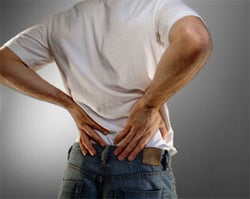Spinal Stenosis
In spinal stenosis, the area around the spinal cord or nerve roots narrows, causing pinching that results in pain, weakness, numbness or tingling.
At WakeMed, our goal is to help patients with spinal stenosis get back to an active, pain-free lifestyle as quickly as possible.
Symptoms of Spinal Stenosis

The most common symptom is pain, which will vary depending on the location of the pinched nerve.
Pinches in the cervical area cause pain, tingling and numbness in the neck or arm. Pinches in the lumbar spine cause pain and cramping in the legs.
Causes of Spinal Stenosis
Spinal stenosis is largely age-related, developing from degenerative arthritis or osteoarthritis.
Spinal column fractures and spinal cord tumors can also be causes.
Diagnosing Spinal Stenosis
Our orthopedists take a detailed history of symptoms and conduct a thorough physical examination to check for signs of spinal stenosis.
Magnetic resonance imaging (MRI) is most frequently used to diagnose spinal stenosis. Myelograms and computed tomography (CT) scans can also be used.
Treating Spinal Stenosis
We usually start treatment by recommending non-steroidal anti-inflammatory medications (NSAIDs) or prescription-strength medications, when the pain is severe enough.
Epidural steroid injections are another treatment option.
For patients dealing with persistent and severe symptoms, we may recommend surgery.
Make an Appointment
We welcome new patients. If you’d like to meet with one of WakeMed’s orthopaedists about spinal stenosis, please make an appointment by calling us at 919-232-5020.